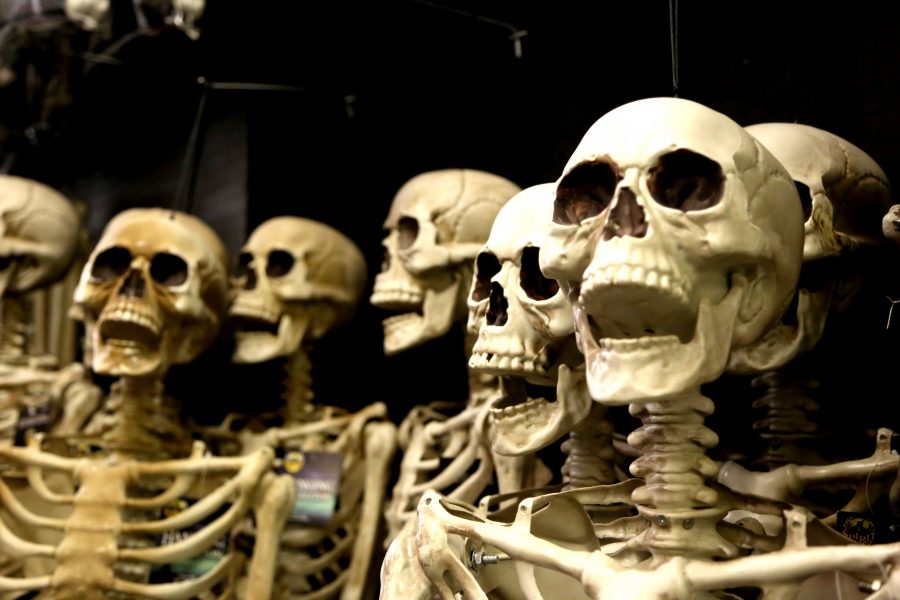Launching the world into a frenzy of festivities is the holiday that is either one of the most awaited or dreaded celebrations: Halloween. Drawn from ancient practices and celestial guides, countries worldwide have celebrated this holiday around the same time of year for one single reason, to engage with the dead. What has become a day of candy and pumpkin spice was once a celebration of life approaching the end. Just as winter scrapes its cold finger through the land and as trees become skeletal, many cultures took the time to remind themselves that they too will have their last fall season.
The European holiday of Halloween originated nearly 2,000 years ago from the Celtic festival of Samhain, which took place on Nov. 1. This date marked the end of the summer solstice, known to the Celts as the harvest season, and the beginning of the winter solstice, which was associated with the death of crops and ultimately the death of human life.
The transition in the celestial sphere led the Celts to believe that on the night before the winter solstice, the souls of the dead were free to roam the earth to welcome the deathly season. On Oct. 31, the eve of the festival, the Celts would lay food and wine out for the dead and wear masks to walk amongst the spirits undisturbed. The following day the Celts would celebrate the new solstice by wearing costumes and dancing around bonfires to ward the spirits back to their graves.
As the Celts spread throughout Europe, the holiday was modified yet continuously celebrated. In Britain, the act of “souling,” or gifting treats, was integrated when people would go door-to-door asking for soul cake, food or money in exchange for a song or a poetry reading. In 1607, when the British colonized America, immigrants brought the Celtic holiday across the ocean and celebrated on a small communal scale where “souling” was still celebrated, but the holiday began to focus more on tricking rather than treating.
It was not until the ‘50s that the holiday was commercialized into the family-friendly holiday that is practiced in the U.S. today.
The fall holiday has another history on the west side of the world. The Spanish holiday is celebrated as El Dia De Los Muertos, or The Day of the Dead. Before the Spanish conquest, over 3,000 years ago, the Aztec Empire worshiped Mictlantecuhtli and Mictecacihuatl, the god and goddess of death in Tenochtitlan, an ancient city located in Mexico. They would hold celebrations in their honor where sacrifices and vigils were held in the Aztec month of Tititl in January. When the Spanish conquered the Aztec Empire in 1519, the Catholic Church integrated the celebration by moving the Aztec holiday of the underworld to be celebrated on the church’s Saints Day, or All Souls Day holiday.
The celebration, which lasted a month, was trimmed to last two days. Nov. 1 was made Dia de Los Innocentes y Angelitos, or Day of the Innocent and Angels, where the babies, children and youths who have died are celebrated. The following day, Nov. 2, was made Dia de Los Muertos where the adults and elderly were remembered.
During Dia de Los Muertos, people celebrated and continue to celebrate the dead by building vigils to honor relatives and hold parties that involve the entire community. It is believed that by honoring dead relatives, their spirits will provide good luck, protection, and wisdom for the family. Candles, Marigolds (the flower of death), fruit, “pan de muerto” or bread of the dead, and sugar skulls are offered on the altars and vigils. Toys are left for the children. Cigarettes and shots of mescal are left for the adults. Water and food are provided for the weary spirits that have traveled a long way. On the afternoon of Nov. 2, people take to the cemetery where tombs are cleaned, loved ones gather to reminisce, games are played and bands perform.
China celebrates with Teng Chieh, or The Festival of the Hungry Ghosts, which is believed to have originated 2,000 years ago during the Hang Dynasty, but its ancestral beginnings have yet to be confirmed. This holiday is celebrated the 15th of the seventh lunar month, which usually falls around July or August. This festival is one of several traditional festivals where the Chinese worship their ancestors. Families lay out photographs and ancestral tablets of the deceased while incense is burned in their memory. Many take this opportunity to confess their transgressions to their ancestors for reward or punishment. At the end of the day, families hold a feast full of food where an empty seat is put out for a lost ancestor to sit and eat.
At first glance, the similar holidays from these different cultures may conjure ideas of alien guidance, but a closer look will show that these values are inherent to humans across the globe.
The fall is a time of preparation for the winter and a time to harvest the food that will carry these cultures to safety in the spring.
Winter itself is a time of dying, a reminder to these cultures of those who have died and those who will die, including themselves. It’s a morbid thought, but the promise of spring is reason enough to trudge through a winter. We are creatures of the earth, and with its seasons we move into different stages of life and celebrate them accordingly.
So, whether it’s with pan de muerto or pumpkin spice lattes or a candle by a tombstone, gear up for the fall season because it’s coming whether we want it or not.
Stephanie Hinojosa may be reached at [email protected].






